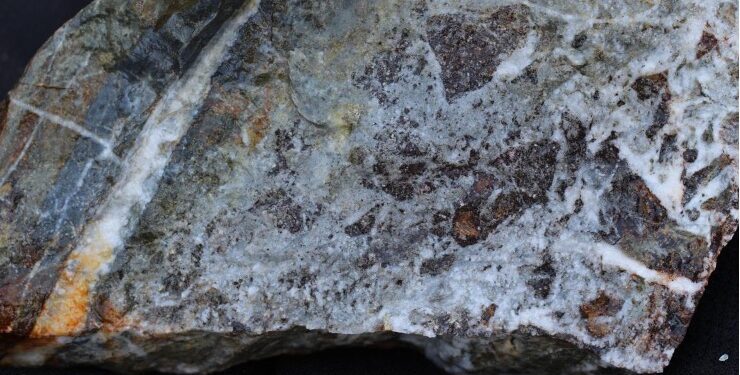North Stawell Minerals (ASX:NSM) has identified a high-grade, south-east plunging shoot at the historic Darlington Gold Mine, 10km north of Stawell in Victoria, Australia.
Highlights:
- The well-defined gold mineralization at Darlington comprised 3.0m at 11.0g/t from 60m, including 1.0m at 17.7g/t from 62m; 6.0m at 3.45g/t from 42m; and 3.0m at 2.20g/t from 45m.
- All drillholes returned significant grades and five of the holes end in anomalous mineralization (>1g/t)
- The historic Darlington mine produced 2,347oz of gold at 18.2g/t, and is the southernmost mineralization in the highly gold-prospective eastern Stawell Corridor, which also hosts the mineralization at Stawell (4.9Moz), Wonga Mine (294koz) and Wildwood inferred mineral resource (55koz).
- The Darlington trend is 700m in length, trending northwest-southeast, and open in both directions. The high-grade shoot lies within this plane and plunges moderately to the southeast – and is untested and open down-plunge.
“The North Stawell Mineral exploration team has worked hard to secure land access to the central Darlington Prospect since the focus on regional programs commenced,” Chief Executive, Russell Krause, said.
“Best drilling results from a seven hole programme has intersected up to 17.5g/t Au (total intersect 3m at 11.0g/t Au in NSAC0527) 40m along strike strike and down-plunge of the historic, high grade Darlington Mine (2,137oz Au at 18.2g/t Au production). There is no drilling further down-plunge to the southeast that is deep enough to effectively test the target beyond this new, exciting gold intercept.”
The Darlington Prospect is approximately 700m trend and open north and south, with an interpreted higher grade, plunging shoot at its centre (daylighting near the historic mine). The drilling programme has effectively determined the shoot geometry, significantly consolidating understanding of the mineralization. This is another success for NSMs Phase 2 drilling – which is specifically designed to determine mineralization geometry in preparation for deeper assessment of key targets.
Five of the seven holes have ended in broad intercepts of anomalous gold, an encouraging indication of more widespread mineralization. Deeper intercepts outside the identified high-grade shoot are interpreted as possible parallel structures, and their gold-potential will be part of further drill planning.
Multiple plunging mineralization shoots at Darlington fits the NSM exploration models for Stawell-type gold, which includes quartz-hosted gold mineralization ramping off a basalt buttress at depth, and into the metasedimentary rocks. Pursuing these targets to depth has potential to trace mineralization to the deeper, basalt-proximal mineralization that characterizes the impressive mineralization at Stawell.
The Wallis 200 Air Core rig continues to perform well in the ground conditions at North Stawell completing other Phase 2 programs at Lubeck Tip and Challenger, as well as additional Phase 1 reconnaissance programmes at Lubeck and Ashens. Results will be released as assays are returned.
For further information please visit: https://www.northstawellminerals.com/












